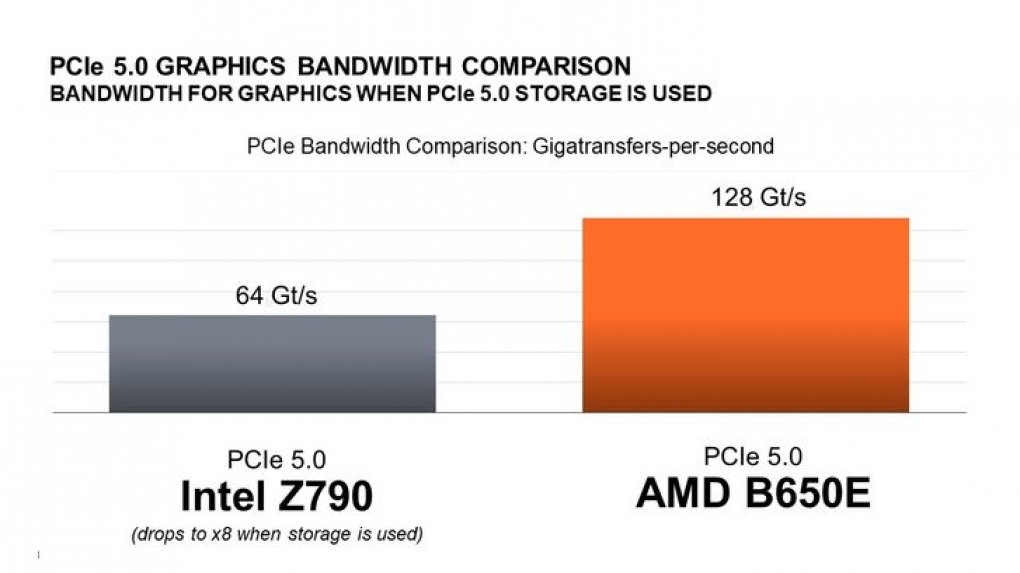Ryzen 7000: AMD highlights longevity of AM5 over Intel sockets

In a new blog post on his community website compares AMD its new AM5 platform with Intel’s current LGA 1700 platform in terms of cost, durability and value. It is claimed that Intel’s platforms are limited to one or two generations of processors.
With AM4, AMD famously proved that a single socket can be enough to enable performance increases from generation to generation. AM4 was introduced in 2016 and the platform has hosted multiple generations of Ryzen processors since then. AMD also provides an example here: If you bought a Ryzen 3 1300 in 2017, you could upgrade to a Ryzen 7 5800X3D in 2022 without changing the mainboard.
“Competitors, on the other hand, are making no promises of future upgrade support on their latest LGA1700 platform. Intel has always limited platforms to one or two processors, so users purchasing a 12th or 13th Gen Intel Core platform are likely spend a lot more money on a whole new motherboard if you want to upgrade to a 14th gen processor or beyond,” according to the blog post.
Intel limited on CPU sockets
As referring to Tomshardware.com reported, AMD is no doubt more interested in supporting future processors on its platforms from a longevity standpoint. Intel, meanwhile, hasn’t had such a long-lived platform up its sleeve since the LGA775 was seven years old, and in fact it’s been a while since an Intel platform has supported more than two generations of processors.
Likewise, the later LGA1151 platform was the last to accommodate Skylake, Kaby Lake, Coffee Lake, and Coffee Lake Refresh chips. Nevertheless, you had to change the mainboard for more pins for the power supply, although Intel basically stuck to the LGA1151 socket. In addition, while there were unofficial workarounds in the form of modified firmware to get older processors running on newer boards, Intel naturally frowned upon this.
Chipset Advantage
Another argument from AMD is that the company’s “budget” B650E chipset offers more benefits than Intel’s “premium” Z790 chipset. In terms of feature set, B650E motherboards promise full bandwidth for graphics cards and storage devices with PCI-E 5.0. In comparison, the Intel Z790 motherboard loses 50 percent of graphics card bandwidth when a PCI-E 5.0 SSD is installed on the same motherboard – the primary expansion slot falls from a x16 connection to a x8 connection.
Ryzen 7000: AMD highlights AM5 longevity over Intel (2)
Source: AMD
According to Tomshardware.com, AMD represents this limitation as greater than it is, since modern top graphics cards, such as the Geforce RTX 4090, are more than satisfied with the bandwidth of a PCIe 5.0 x8 interface. Meanwhile, B650E motherboards start at $240 in price, while the cheapest Intel Z790 board is priced at $180. For price-conscious buyers, however, B650 models with PCI-E limitations usually start at $150.
Ryzen 7000: AMD highlights AM5 longevity over Intel (3)
Source: AMD
future outlook
So far, Intel’s LGA1700 platform supports the Alder Lake and Raptor Lake processors. Intel’s upcoming 7nm Meteor Lake chips, due in 2023, are unlikely to continue to be supported. To that end, images of the LGA1800 socket have already been leaked, although they reportedly show the exact dimensions of the LGA1700 socket. Meanwhile, AMD has confirmed that AM5 will have a long lifespan comparable to AM4. Owners of motherboards with AMD’s 600 series can therefore rest easy.
Reference-www.pcgameshardware.de